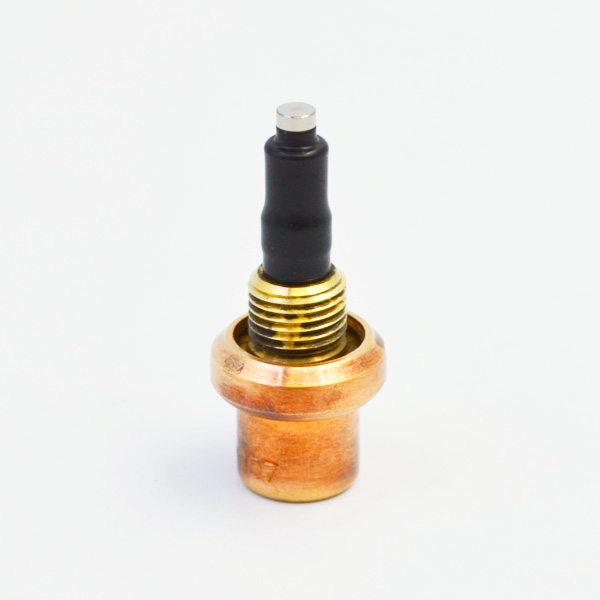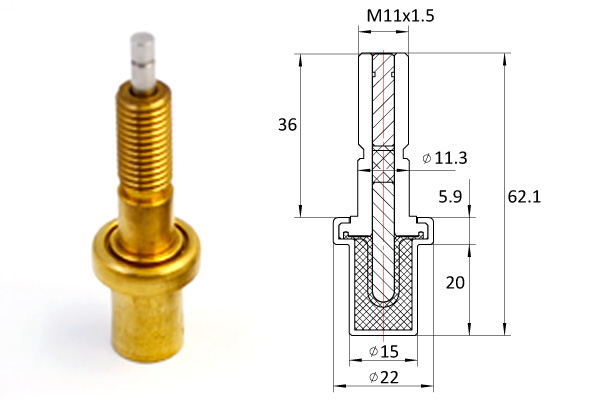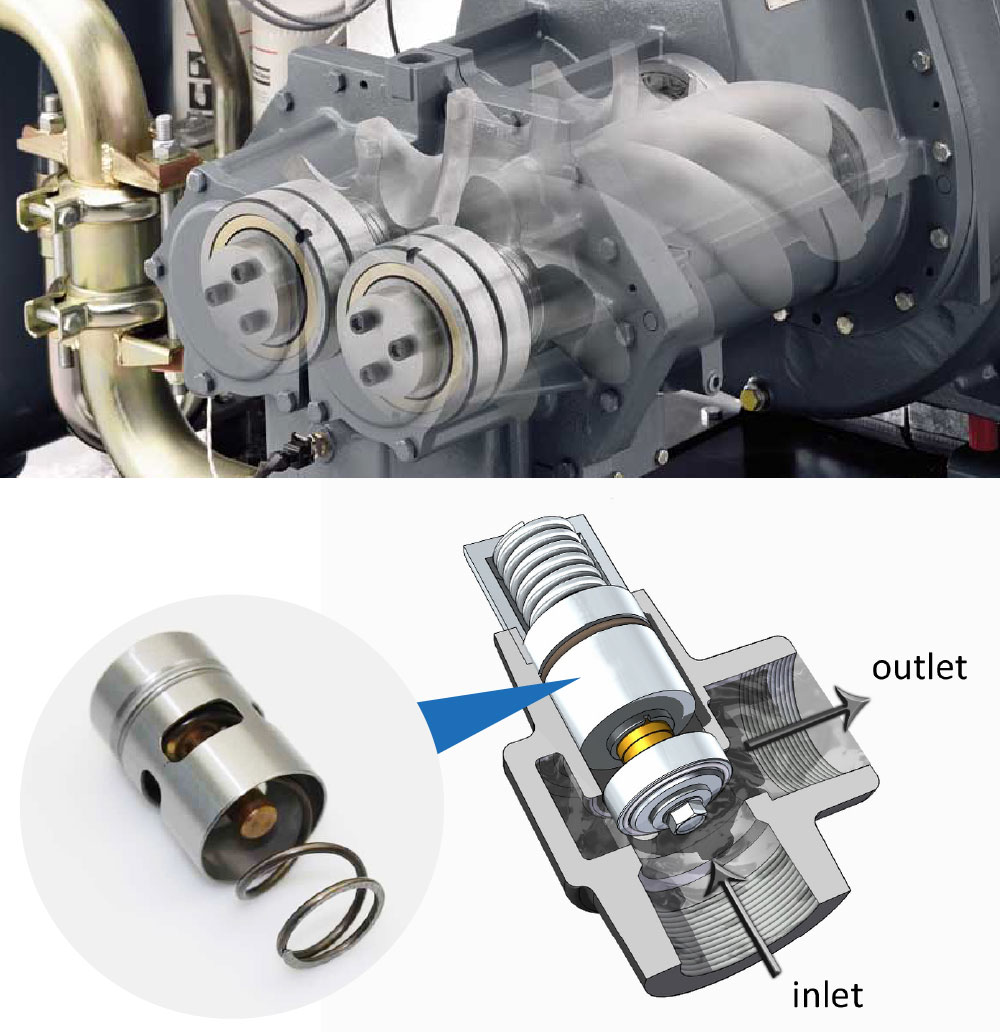PID controller plays a key role in the performance of HVAC control system. HVAC control system is non-stationary and time-varying, which makes the traditional PID controller unable to achieve high-precision HVAC control effect. In order to overcome the shortcomings of traditional control methods and improve the accuracy of HVAC control, a HVAC control system based on neural network optimization PID controller is proposed. This paper analyses the working principle of HVAC system, establishes the mathematical model of PID controller, optimizes the PID control parameters of HVAC system through neural network, continuously adjusts the control error, guarantees the HVAC control effect, and tests the HVAC system on the platform of Matlab. The results show that the system achieves higher control accuracy than other HVAC systems, and achieves stable state in the shortest time, reduces the adjustment time of the system, thermostatic element improves the working efficiency of the HVAC system, and has higher practical application value. With the continuous development of China’s economy, HVAC system has been widely used in various fields. In practical application, HVAC control system is affected by the external environment, which has the characteristics of large overshoot and non-stationarity.

Therefore, PID controller is used to adjust it [2?3]. Although the structure of the PID controller is very simple, easy to operate and high reliability, the control effect is closely related to the reasonable selection of its parameters. If the parameter selection is unreasonable, the control effect of the HVAC control system will not be guaranteed [4?6]. In order to obtain reasonable PID control parameters, many scholars have invested a lot of time in their analysis, and put forward many optimization methods of PID control parameters, thus improving the performance of HVAC control system [7]. The most original parameters optimization of the PID controller of HVAC system is realized by some experts.

Experts set the parameters of the PID controller according to their own working principle and scheduling experience of HVAC system. The working process is very simple. However, due to the variety of HVAC systems and the limited knowledge of experts, the setting of the parameters is limited. The parameters of PID controller have certain subjectivity, and the optimization results are blindness. Sometimes the theoretical control effect is far from the actual one [8]. Then some scholars put forward the optimization method of PID parameters of HVAC control system based on Z? N method and simplex method. Compared with empirical method, the result of parameter setting is more reasonable. However, they also have their own shortcomings, such as poor versatility, inability to adapt to the non-stationarity of HVAC control system, and long adjustment time. In addition, due to the time-varying of HVAC system, the optimal mathematical model can not be designed, which makes it difficult to optimize the parameters of the PID controller of HVAC system [9?10]. In recent years, neural networks have been developed continuously. Because of their good learning ability, they provide a new research tool for on-line optimization of PID controller parameters [10?11]. In order to overcome the shortcomings of traditional control methods and improve the accuracy of HVAC control, a HVAC control system based on neural network optimization PID controller is proposed. Firstly, the mathematic model of the PID controller is established, then the PID control parameters of the HVAC system are optimized through the neural network, and the control error is adjusted continuously to ensure the HVAC control effect. Finally, the HVAC control system is tested on the platform of Matlab. The results show that the system achieves higher control precision than other HVAC systems, and in the shortest time, the system can reach a stable state, reduce the adjustment time of the system, improve the efficiency of the HVAC system, and have higher practical application value. BP neural network is used to estimate and adjust the parameters of the PID controller. Then the output of BP neural network is three parameters of the PID controller of the HVAC control system. Its structure is shown in Figure 1. PID controller, which directly controls the HVAC system. The parameters of the PID controller [Kp, Ki, Kd] are adjusted online by BP neural network to ensure the optimal performance of the HVAC control system. Step1: Optimize the neural network structure according to the PID controller of HVAC control system. Step2: Sample the HVAC system [r(k)] and [q(k)] and get [e(k)=r(k)-q(k)].

Step3: Will [e (i),] [r (i),] [q (i)] and [u (i-1),] [i = k, k-1,… K-p] is the input of the neural network. Step4: The output of the neural network is a parameter [Kp, Ki, Kd]. Step5: Calculate the control output of the PID controller [u(k),] and calculate the error. Step6: If the control error of HVAC system meets the requirement of practical application, the optimization will be terminated, otherwise the optimization operation will continue.
Step7: Adjust the weight coefficients of each layer [vlj (k)] [wji (k)]. Step 8: Increase the number of iterations and return to Step 3. In order to analyze the performance of the HVAC control system in this paper, the simulation experiment is carried out on the platform of Matlab 2014, and the classical PID controller optimization method, Z?N method and simple method are selected for comparative experiments. The performance evaluation is carried out with control accuracy, overshoot and adjustment time. The results are shown in Table 1. Z? N method has the lowest control precision, the largest overshoot and the longest adjustment time, which can not meet the application requirements of HVAC system. The control precision of the HVAC control system by the simple method has been improved to a certain extent, but the control error is more than 10%, which exceeds the scope of practical application. This is because the simple method is greatly affected by the initial value of the parameters. When the parameters are set unreasonably, the control effect becomes worse sharply, and the adjustment time becomes longer, and the anti-interference ability is poor.

Among all the control methods, the neural network optimized PID controller has the best control effect, the control accuracy reaches 95%, the control error is less than 10%, and the system adjustment time is short, the overshoot is small. This means that the method can ensure the HVAC control system to work stably, with strong anti-interference ability and good robustness.
In order to improve the performance of HVAC control system, aiming at the limitation of current control methods, a HVAC control system based on neural network optimization PID controller is proposed. The PID controller of HVAC control system is optimized by using the non-linear learning ability of neural network, and the value of PID parameters is adjusted continuously according to the error to ensure the HVAC control system. The performance of the system is the best. Finally, the simulation results are compared with other methods. The results show that the HVAC control system in this paper has a good control effect, greatly reduces the error of the HVAC control system, and the HVAC control system achieves a stable working state in a relatively short time. It has strong robustness to external disturbances and is a kind of precision.
High efficiency HVAC control system.
